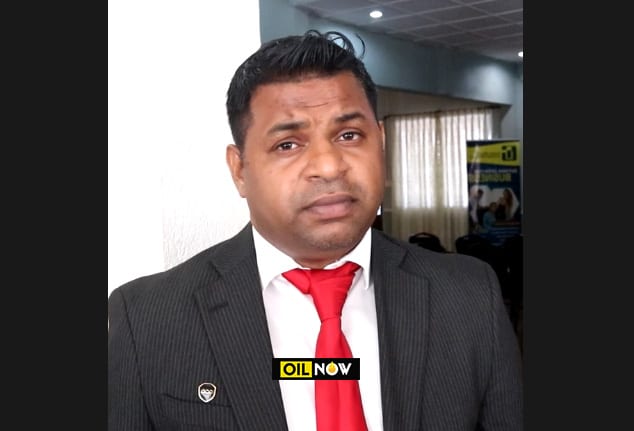The Private Sector Commission of Guyana has written to Publisher of the New York Times, Arthur Sulzberger, protesting what it describes as “misrepresentations” outlined in an article published on July 20, 2018, under the headline ‘The $20 Billion Question for Guyana’.
See the PSC’s letter below:
Dear Mr. Sulzberger,
The Private Sector Commission (PSC) of Guyana writes to draw to your attention to some misrepresentations contained in an article about the Republic of Guyana recently published in your esteemed newspaper.
The article, written by Mr. Clifford Krauss, an energy business correspondent for your newspaper based in Houston, Texas and headlined ‘The $20 Billion Question for Guyana’ grossly misrepresents three facts about Guyana.
Before identifying these misrepresentations, the Private Sector Commission of Guyana wishes to advise of its unyielding commitment to freedom of the press and to freedom of expression. It is also our firm belief that the press has the responsibility to report fairly, accurately and without bias. The PSC sees the New York Times as a beacon of professional journalism and it is against this backdrop that we are writing to you to express our concern about this rare diversion from your publication’s well- established tradition of unbiased reporting.
“Guyana is a vast, watery wilderness with only three paved highways. There are a few dirt roads between villages that sit on stilts along rivers snaking through the rainforest. Children in remote areas go to school in dugout canoes, and play naked in the muggy heat.” This is the opening paragraph of the article.
The first misrepresentation is Mr. Krauss’ assertion that Guyana has only three paved highways. As we Guyanese would say, even if Stevie Wonder were to visit Guyana he would see many more than three paved highways. We are baffled as to how the writer could have concluded that Guyana has only three paved highways.
The article then goes on to say:
“Hugging the coast are musty clapboard towns like Georgetown, the capital, which seems forgotten by time, honeycombed with canals first built by Dutch settlers and African slaves.”
Mr. Krauss’ depiction of Georgetown as a clapboard city is another misrepresentation based on our definition of the word clapboard which is taken from a variety of dictionaries. Indeed, Georgetown and much of Guyana boasts of wooden structures but the majority of these are certainly not clapboard structures. These structures, for the most part, are elegantly built utilizing the timber resources of Guyana, as represented most aptly by our historic St. George’s Cathedral, reputedly the tallest wooden building in the world.
Mr. Krauss’ third misrepresentation is contained in the following paragraph:
“The first chance was independence from Britain in 1966, and that chance was blown. A plague of ethnic tribal politics has produced a fragile state with an economy propelled by drug trafficking, money-laundering, and gold and diamond smuggling. A vast majority of college-educated youths emigrate to the United States or Canada, while those who stay behind experience high rates of H.I.V. infection, crime and suicide.”
While there are drug trafficking and gold and diamond smuggling in Guyana it is a gross misrepresentation that the economy is propelled by these activities. Our economy is propelled by the hard and smart work of thousands of Guyanese workers in a range of productive sectors such as agriculture, mining, manufacturing along with a robust private sector and strong public service.
The most vexing, if not harmful, misrepresentation, however, is Mr. Krauss’ definitive statement that our college-educated youths who opt to remain in Guyana experience high rates of HIV infection. On what basis, based on whose statistics, does he make such a statement? Responsible journalism requires that such a statement be backed by credible and verifiable statistics. This reckless assertion is an unfair indictment of the young people of Guyana and one which they do not deserve. Based on this single misrepresentation we at the Private Sector Commission feel that the New York Times is obligated to remedy its potential negative impact.
We must note that it is unfortunate that in exposing Guyana to his readership Mr. Krauss did not see it fit and proper to mention that we are home to the internationally famous Kaieteur, the highest single drop waterfall in the world, the St. George’s Cathedral to which we referred earlier in this letter and to the fact that rums produced in Guyana continue to win the top spot annually at international wine and spirits competitions. And these are just a few of the many positive facts that he could have highlighted. However, we respect the right of the journalist to choose what he thinks would satisfy his readership.
The Private Sector Commission of Guyana stands ready to engage with you and/or the Editorial Board of the New York Times or its representatives in any initiative you may identify to address the concerns we have expressed in this letter.
Please accept, Mr. Sulzberger, our best wishes for the continued success of the New York Times as well as our appreciation of the coverage of the issues and events globally which your publication provides.
Sincerely,
Deodat Indar
Chairman (ag)
Private Sector Commission of Guyana
Cc
Hon. Moses Nagamootoo -Prime Minister of Guyana
Hon. Carl Greenidge- Minister of Foreign Affairs of Guyana
Dr. Riyad Insanally-Ambassador of Guyana to the United States of America
Mr. Perry Holloway- Ambassador of the United States of America to Guyana D
RELATED:
ExxonMobil says it did not pay for NYT reporter’s visit to Guyana
‘We are not embarrassed about who we are’ says Guyana’s Natural Resources Minister
Letter-to-the-Editor: Times article an insult to Guyanese; SWF not in limbo




